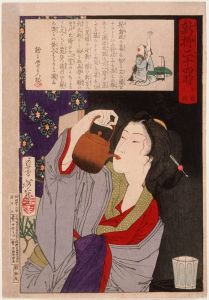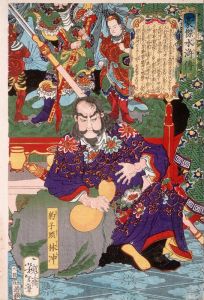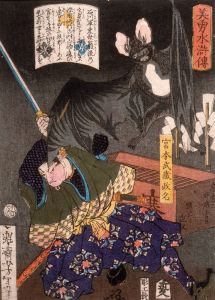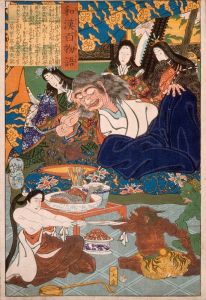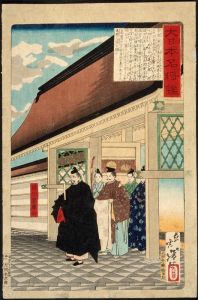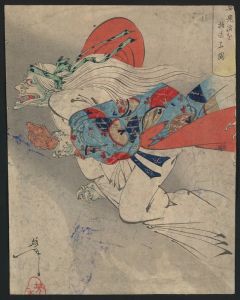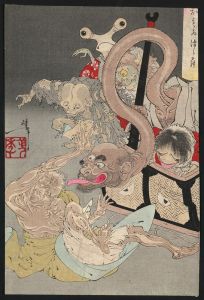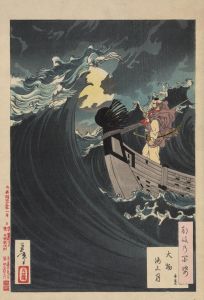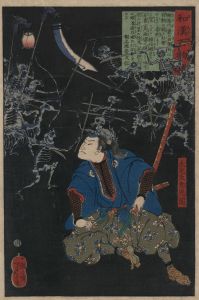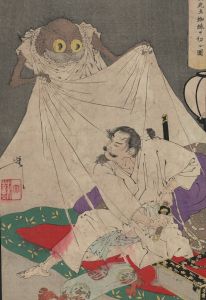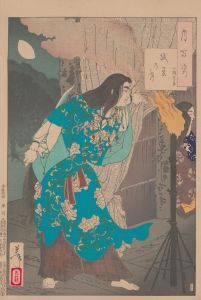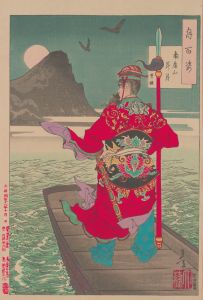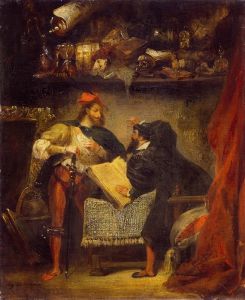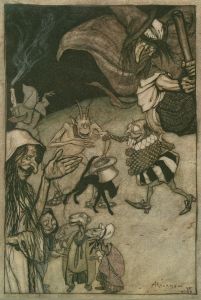
Yorimitsu Enters the Treasure Mountain
A hand-painted replica of Tsukioka Yoshitoshi’s masterpiece Yorimitsu Enters the Treasure Mountain, meticulously crafted by professional artists to capture the true essence of the original. Each piece is created with museum-quality canvas and rare mineral pigments, carefully painted by experienced artists with delicate brushstrokes and rich, layered colors to perfectly recreate the texture of the original artwork. Unlike machine-printed reproductions, this hand-painted version brings the painting to life, infused with the artist’s emotions and skill in every stroke. Whether for personal collection or home decoration, it instantly elevates the artistic atmosphere of any space.
Tsukioka Yoshitoshi (1839–1892) was a prominent Japanese ukiyo-e artist, celebrated for his innovative and dramatic woodblock prints. One of his notable works is "Yorimitsu Enters the Treasure Mountain," which exemplifies his mastery of storytelling and visual composition. This artwork is part of Yoshitoshi's broader exploration of historical and legendary themes, often drawn from Japanese folklore and classical literature.
The print depicts Minamoto no Yorimitsu (also known as Raikō), a legendary samurai from the Heian period, embarking on a daring journey to the mythical Treasure Mountain (Takara no Yama). Yorimitsu is a recurring figure in Japanese folklore, renowned for his bravery and exploits, often accompanied by his loyal retainers, the Four Heavenly Kings (Shitennō). In this particular scene, Yoshitoshi captures the moment of Yorimitsu's entry into the mysterious mountain, which is said to be filled with supernatural treasures and guarded by otherworldly beings.
Yoshitoshi's style in this work reflects his late-career focus on dynamic compositions, vivid colors, and intricate details. The print showcases his ability to blend realism with fantastical elements, a hallmark of his artistic approach. The use of bold lines and dramatic contrasts enhances the sense of tension and adventure, drawing the viewer into the narrative. Yoshitoshi's attention to detail is evident in the depiction of Yorimitsu's armor, the surrounding landscape, and the atmospheric effects that evoke the mystical nature of the setting.
"Yorimitsu Enters the Treasure Mountain" is part of Yoshitoshi's larger body of work that often revisits themes of heroism, supernatural encounters, and the interplay between human and mythical realms. His prints frequently draw inspiration from classical Japanese literature, such as the "Tales of Times Now Past" (Konjaku Monogatari) and other historical chronicles, which provided a rich source of material for his artistic interpretations.
As with many of Yoshitoshi's works, this print reflects the cultural and artistic transitions of the late Edo and early Meiji periods. During this time, Japan was undergoing significant modernization and exposure to Western influences, which also impacted the ukiyo-e tradition. Yoshitoshi's ability to adapt and innovate within this changing landscape solidified his reputation as one of the last great masters of ukiyo-e.
"Yorimitsu Enters the Treasure Mountain" remains a testament to Yoshitoshi's skill as a storyteller and his dedication to preserving and reimagining Japan's rich cultural heritage through his art.





